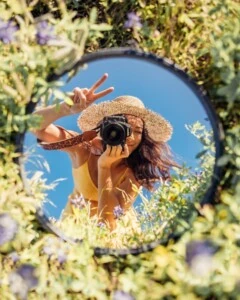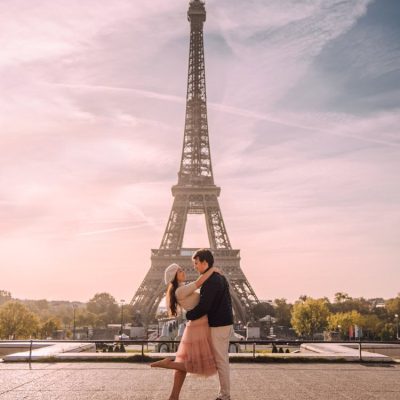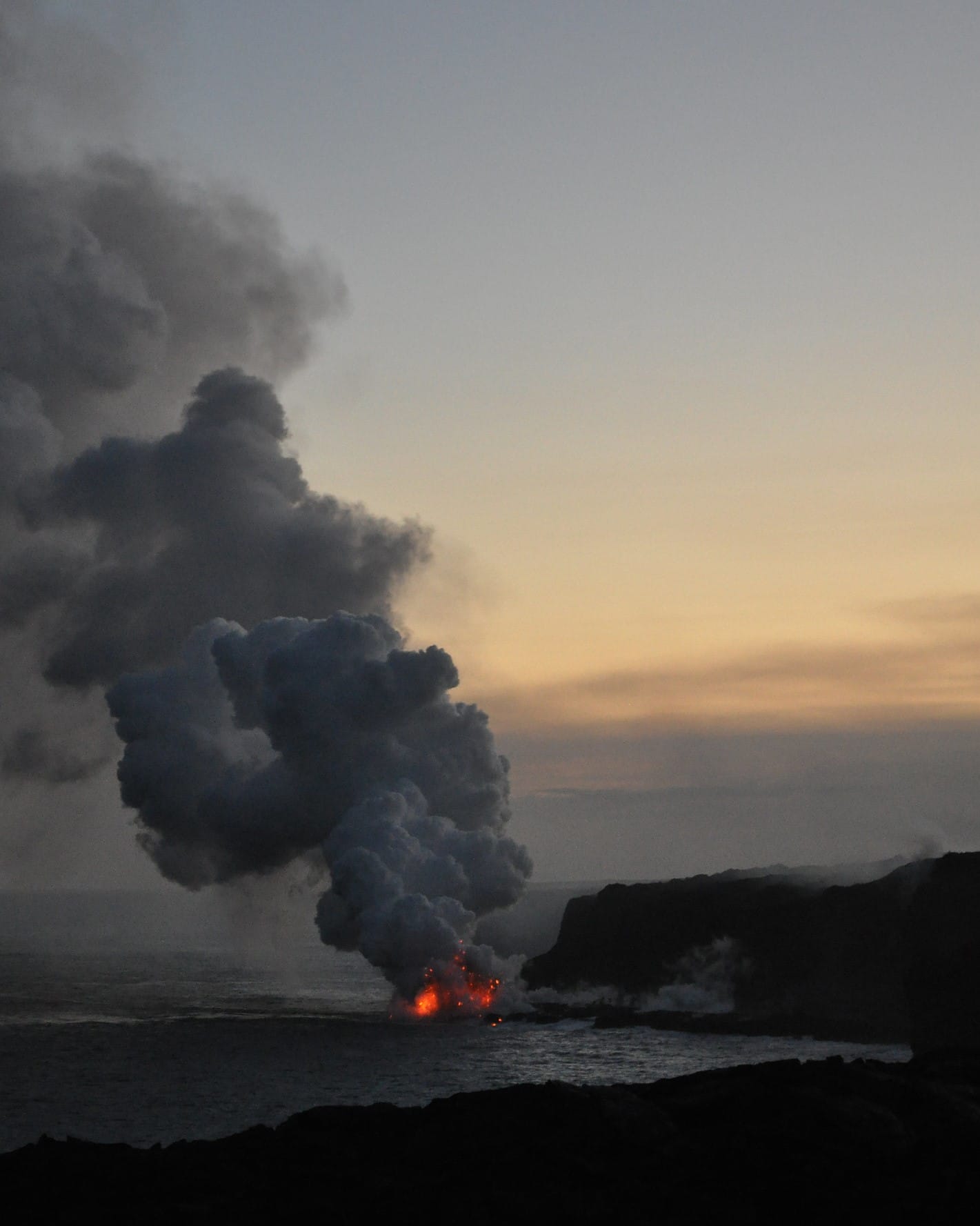
Volcanoes National Park on the Big Island, Hawaii has an absolutely breathtaking landscape.
Known for its volcanic activity, Volcanoes National Park is an exciting place to visit!
It is a fascinating place; at the Visitor Center, you can learn all about how Hawaii was formed. And in its vast landscape, you can see firsthand the incredible craters and lava that made it happen!
The last to join the Union mere months after Alaska, Hawaii is the only state made up of a series of islands.
Though Hawaii contains 132 individual islands, most only consider the largest eight islands.
Hawai’i Island is by far the largest of the islands, hence its name, The Big Island.
And the Big Island is home to Volcanoes National Park.
This treasure of national parks contains 520 square miles of volcanic craters, tropical rainforests, and two active volcanoes.
Grab your camera and pack your hiking books because we’re going to Volcanoes National Park!
Where is Hawaii Volcanoes National Park?
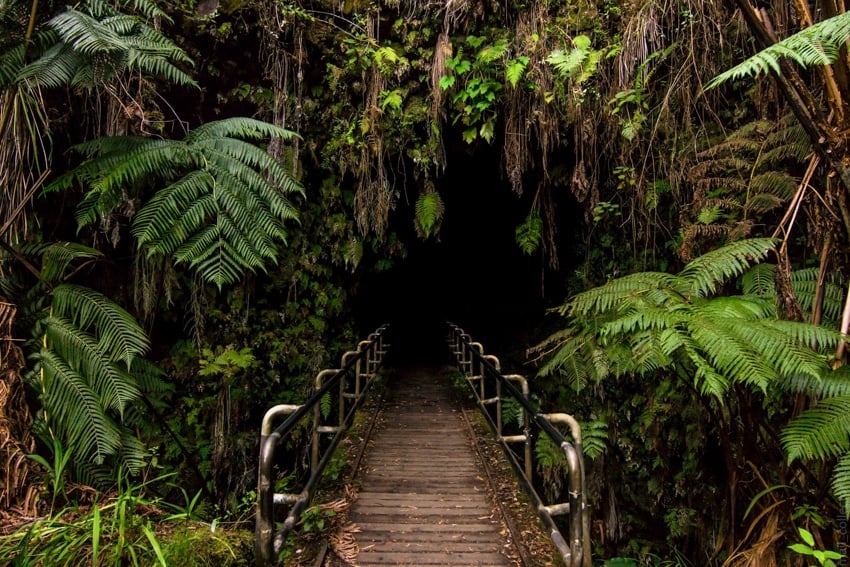
You can find the Big Island at a distance of nearly 2,500 miles from the mainland of the United States.
National parks forest preserves and other designated natural areas cover the majority of the island.
But Hawaii Volcanoes National Park is where you will find some of the coolest and most otherworldly natural landscapes in all of Hawai’i!
Volcanoes National Park is closest to the town of Hilo, just a 45-minute drive.
You will likely arrive at Hilo International Airport from another Hawaiian island.
There is, however, another international airport on the Big Island in Kona.
It is the busier of the two airports, and if you are heading straight to Volcanoes National Park, the drive will be longer, around two hours.
We flew into Kona and spent about a week exploring the Big Island. We didn’t mind the long drive since there was so much to see along the way!
Getting to Volcanoes National Park
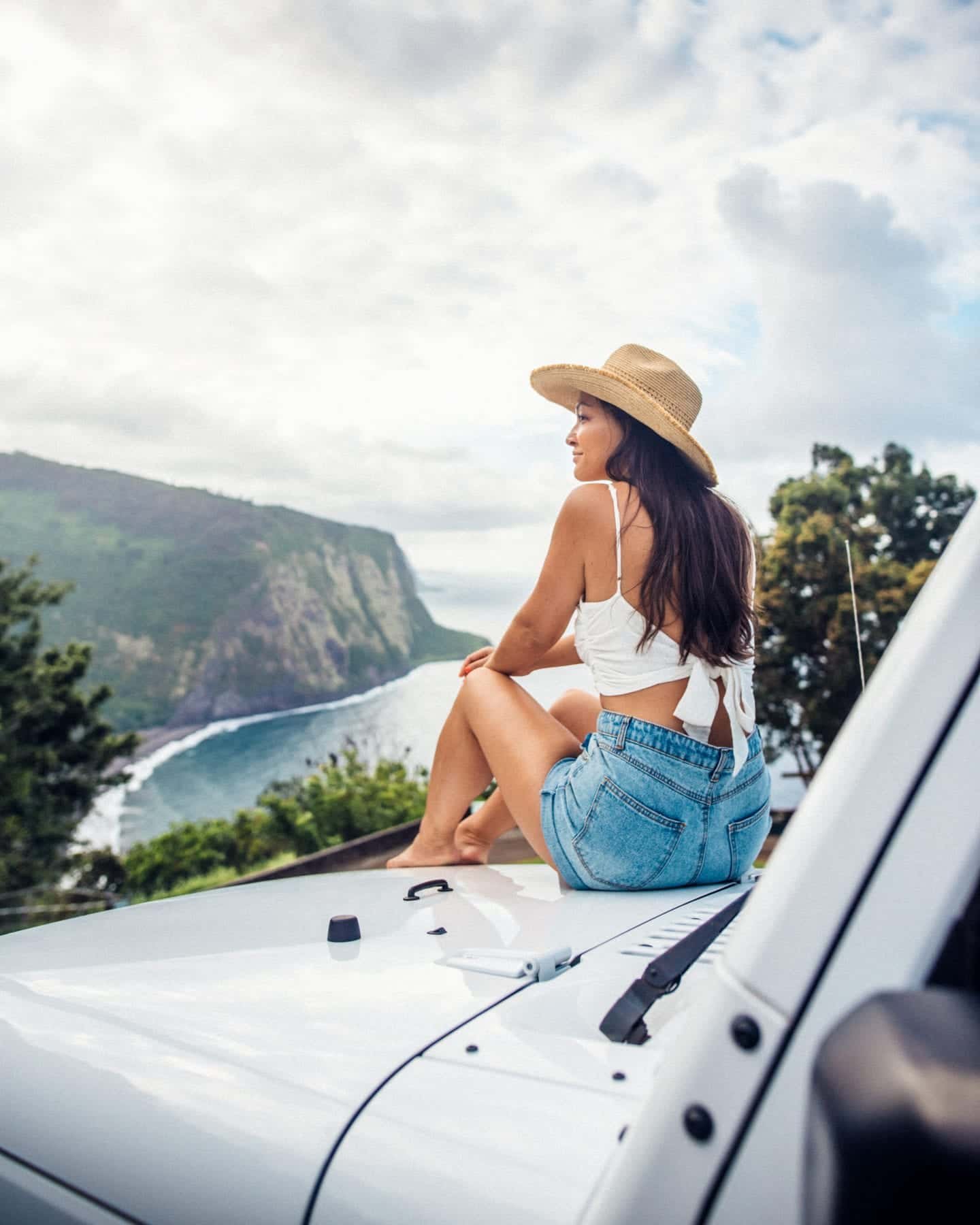
I recommend reaching Hawaii Volcanoes National Park by car.
You can rent a vehicle at either of the Big Island airports, Kona or Hilo, or in either of the towns.
The drive from Kona International will take you roughly two hours and mostly stick to one highway, HI-11 which is also known as Hawaii Belt Road.
The route will take you along the western and southern edges of the island.
Have your camera ready for this scenic drive!
Drivers from Hilo International Airport can expect to take HI-11 as well, just from the opposite direction!
The drive is a quick 29 miles or about 45 minutes.
If you have additional time when paying a visit to the national park, consider driving the entire 150 miles of the Hawaii Belt Road.
This drive loops around Big Island passing through tropical rain forests along ocean cliff-sides and over towering bridges.
Also, Volcanoes National Park is open 24 hours every single day, including holidays!
Expect to pay a park entrance fee of $30 for private vehicles with up to 15 people inside.
Things to Do in Volcanoes National Park
Here are some of the highlights at Volcanoes National Park! These are the best things to do in the area.
Keep in mind that while you may have seen photos of flowing lava at Volcanoes National Park, there is a good chance you won’t see any lava flowing when you visit. But as long as you have that realistic expectation in mind, you’ll love exploring this park.
So here we go! These are the best places to visit in Volcanoes National Park!
Kilauea Visitor Center
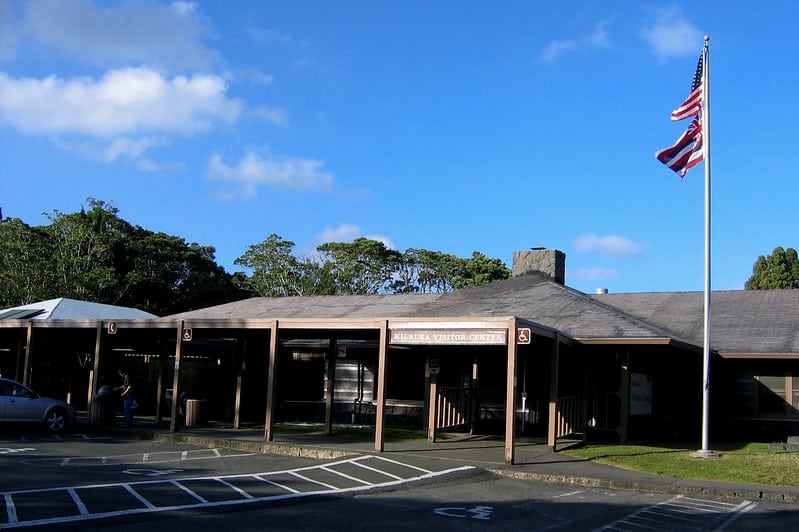
Start your visit to Volcanoes National Park at Kilauea Visitor Center, located just inside the entrance to the park.
The center is open daily from 9am to 5pm.
It’s always best to start here because you can get up-to-date information about the park.
The volunteers and Park Rangers are super helpful and knowledgable about the current conditions of the park. (You can also check park information here!)
They will know about any ongoing volcanic activity, hiking information, and anything else for a safe and fun visit. We learned so much about volcanoes from the volunteer we talked to! (One thing we learned: a new Hawaiian island, Lō’ihi, will reach the ocean’s surface in about 200,000 years!)
They’ll also tell you if any areas are closed and if there are any active lava flows. Unfortunately when we visited, there were no lava flows to safely view, but there’s a chance there could be when you visit!
In addition to your chat with Park Rangers, check out the center’s public exhibits to learn more about its history, geography, biodiversity, and culture!
Crater Rim Drive
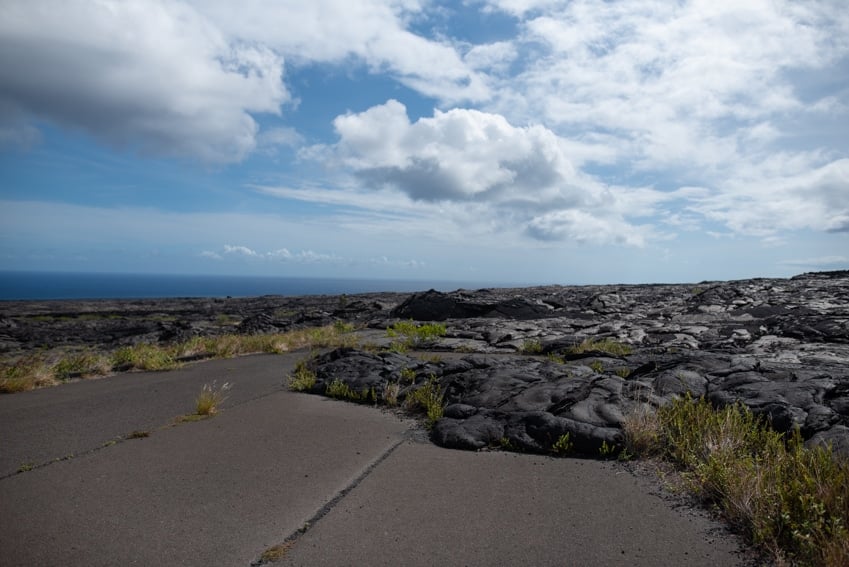
From the visitor center, make your way to Crater Rim Drive for a scenic 11-mile drive circling the Kilauea Caldera.
This drive has views of the park’s volcanoes and tropical greenery.
Along the loop, you will find some of Volcanoes National Park’s biggest attractions.
Keep an eye out for the Thurston Lava Tube (more on this later), the Kilauea Overlook, and many steam vents.
We took this photo because it shows you where the lava covered a road that used to exist in the park! Can you imagine it happening?
Heading to the Big Island? Check out my post on the 40 best things to do on the Big Island!
Thurston Lava Tube
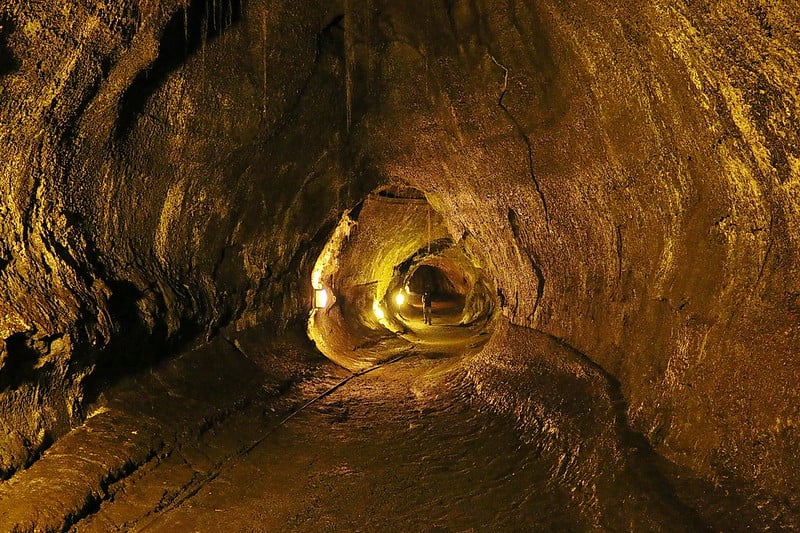
You can follow an underground trail carved out by the natural flow of lava at Nahuku called the Thurston Lava Tube.
You can find the lava tube on the Kilauea Crater at an altitude of 3,900 feet.
This 600-foot long dimly lit cave has a ceiling reaching heights of nearly 20 feet!
Also, the short hike to Nahuku is almost as rewarding as the walk through the lava tube itself thanks to the 20-minute walk through the lush rainforest.
Mauna Loa Volcano
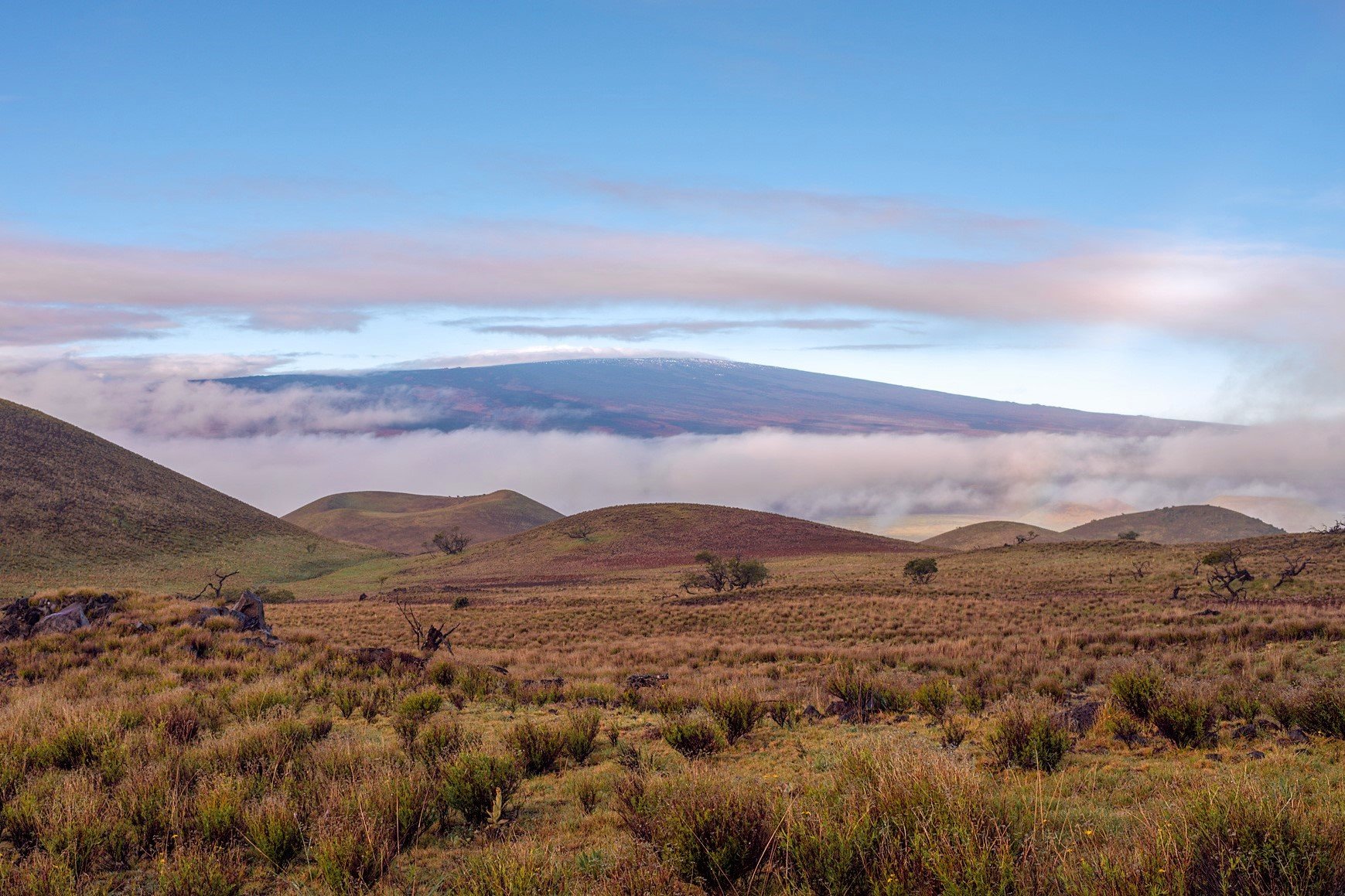
This massive shield volcano is the largest active volcano in the world.
Not surprisingly, it also occupies more than half of the Big Island’s landmass.
The slow but consistent flow of lava that has formed the volcano over its lifetime contributes to both its size and unique shape.
Although the volcano stands at 13,678 feet above sea level, it is much larger if you measure from the ocean floor.
Mauna Loa has a total height to 30,000 feet from the ocean floor!
Based on this measurement, Mauna Loa stands 1,000 feet higher than the peak of Mount Everest!
Also, this volcano is also overdue for an eruption. Pretty ominous, huh?
Mona Loa’s inactivity from 1984 to today marks its longest dormant period on record.
Experienced hikers may use one of two trailheads leading to its summit.
However, neither are recommended for inexperienced hikers.
Kahuku Unit
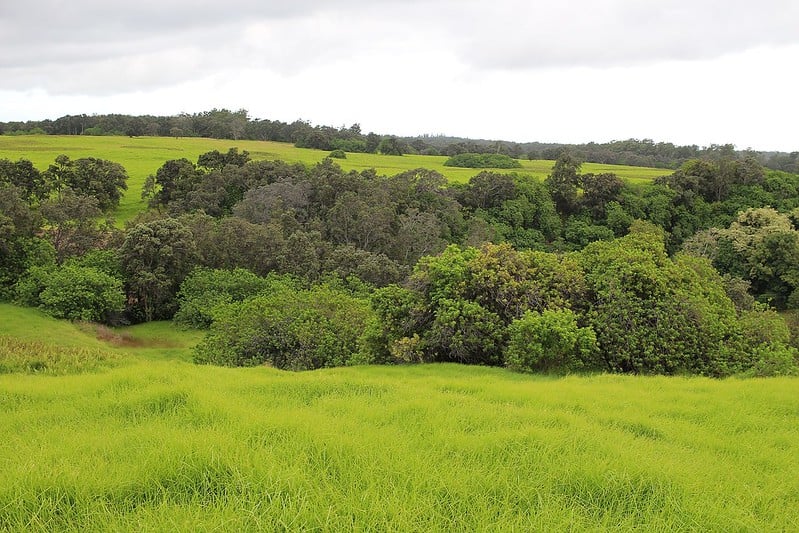
The site was one of Hawai’i oldest cattle ranches.
Today, the Kahuku Unit comprises a sprawling expanse of rolling green hills at the foot of Mauna Loa Volcano.
Kahuku only recently became part of Volcanoes National Park in an effort to conserve this large piece of land, its nature, and the history that has played out in this space.
Some of the area’s petroglyphs and structures were destroyed due to lava flow from Mauna Loa.
That said, you have plenty of opportunities to explore on a hike through Kahuku.
Kilauea Volcano and Halema’uma’u Crater
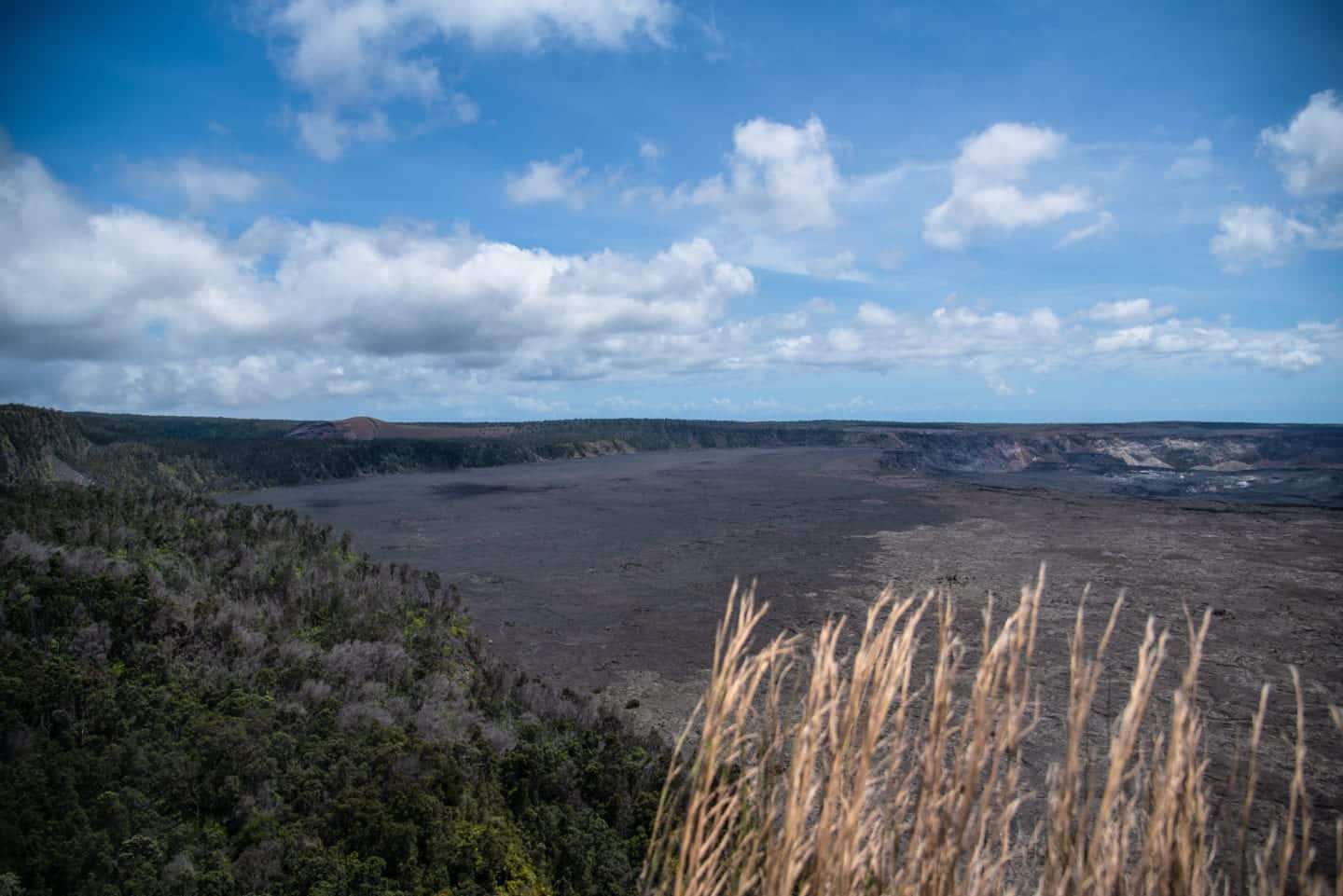
The youngest of Hawaii’s volcanoes, Kilauea formed approximately 280,000 years ago. (Doesn’t sound that young to me!)
It is also the most active, with the most recent eruption before 2018 occurring in 1983.
When Kilauea last erupted in 2018, it caused lava to flow out and cover the area to the southeast.
Sadly, Kilauea’s last eruption destroyed more than 700 homes.
In addition, the summit caldera of Kilauea collapsed, doubling the size of the Halema’uma’u crater!
When the caldera collapsed, a lava lake started to form in the Halem’uma’u Crater.
It has since disappeared, but it just goes to show you how powerful nature can be!
While the lava lake has disappeared, a new water lake has begun to grow! While it looks small relative to the size of the entire crater, the Kīlauea Summit Lake actually has a depth of 128 feet deep and holds a volume of 125 million gallons! And as you might suspect, it’s a very hot lake- about 176-185 degrees Fahrenheit!
Unfortunately, there are no hikes open to the public that take you up to this new lake- the only way to see it is via helicopter. (You can learn more and see a photo of it here!)
However, there are two great hikes to Halema’uma’u Crater, both of which will take moderate effort.
One hike goes from Crater Rim Trail to the floor of the Kilauea caldera following a 1.6-mile loop.
The other is a 2.6-mile loop from Crater Rim Trail to the top of Byron Ledge.
Both paths will lead you through a dense rainforest that has regrown many times after the volcano’s constant eruptions.
Listen for the call of the apapane, a bright red bird that calls the area’s forests its home!
Ha’akulamanu (Sulphur Banks) and Wahinekapu (Steam Vents)
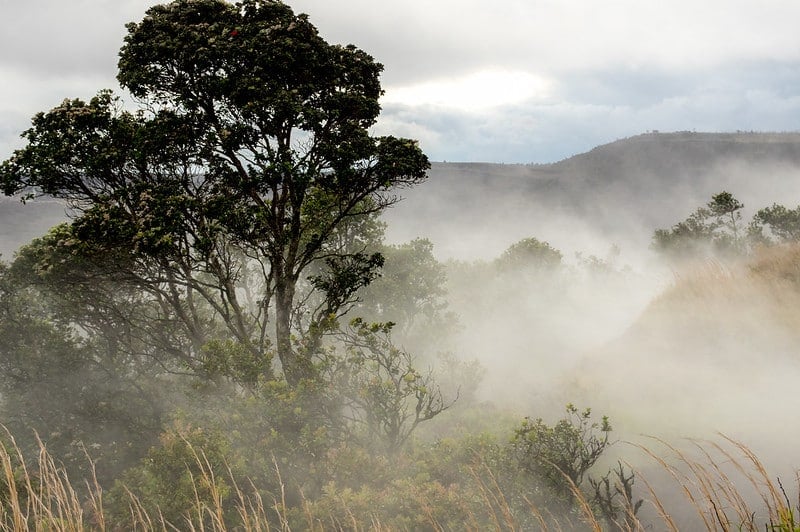
Don’t be too disappointed if you don’t get to see molten lava oozing out of the surface of the volcano.
When Harrison and I visited, the park staff said that they close areas of the park with heavy lava activity.
But don’t worry, you still have a good chance at seeing steam!
Near the summit of Kilauea you will find the Sulphur Banks and Steam Vents.
One is hot, the other smells putrid.
At Wahinekapu, you can clearly see boiling hot vapor wafting from cracks in the earth.
And at nearby Ha’akulamanu, the rotten egg smell of volcanic gas and minerals is easily recognizable.
Pu’u Loa Petroglyphs
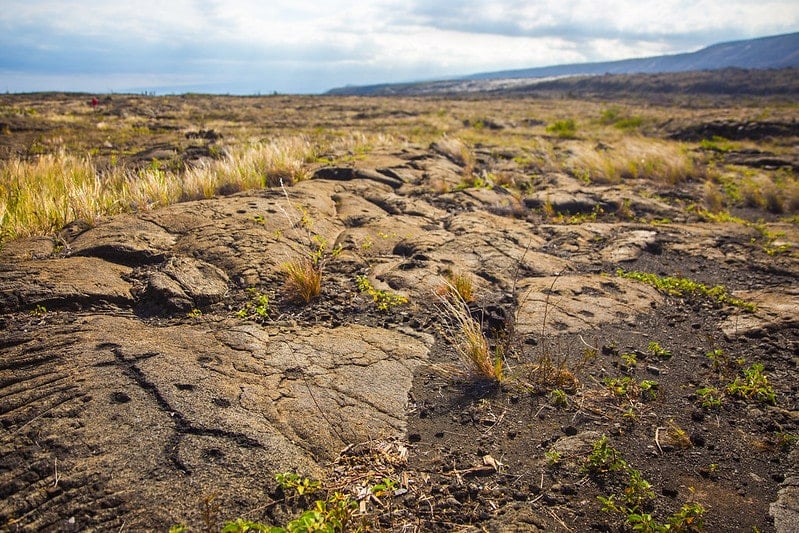
Pu’u Loa Petroglyph Field is the largest collection of petroglyphs that has been found in Polynesia!
The hundreds of rock carvings here date back to at least the 16th century!
You can access the field from Chain of Craters Road.
From there, you can follow a 0.6 mile hike to the elevated boardwalk that hangs over the petroglyphs.
Holei Sea Arch
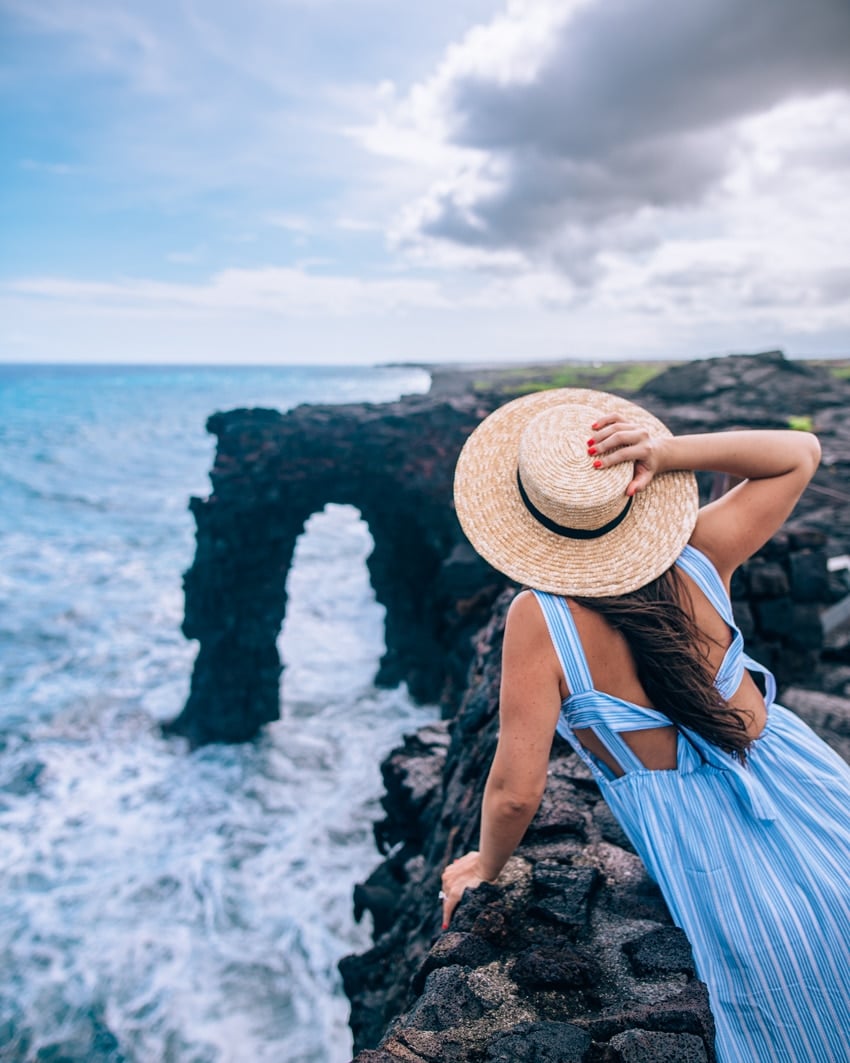
At the southern and of Volcanoes National Park stands the 550-year-old Holei Sea Arch.
You can drive all the way down to Holei Sea Arch. There’s just a short walk from the parking lot to the edge of the cliff.
Waves are constantly crashing into this 90-foot rock formation- the sheer power is remarkable to see!
As of February 2020, park staff have roped off the edge of the sea cliff due to the instability of the land near the cliffs.
The erosion from the waves and volcanic activity have a habit of changing the landscape, so safety has to come first.
But don’t worry, you can still visit the sea arch while it is still standing by taking in the view from an observation platform further away!
Back-Country Camping
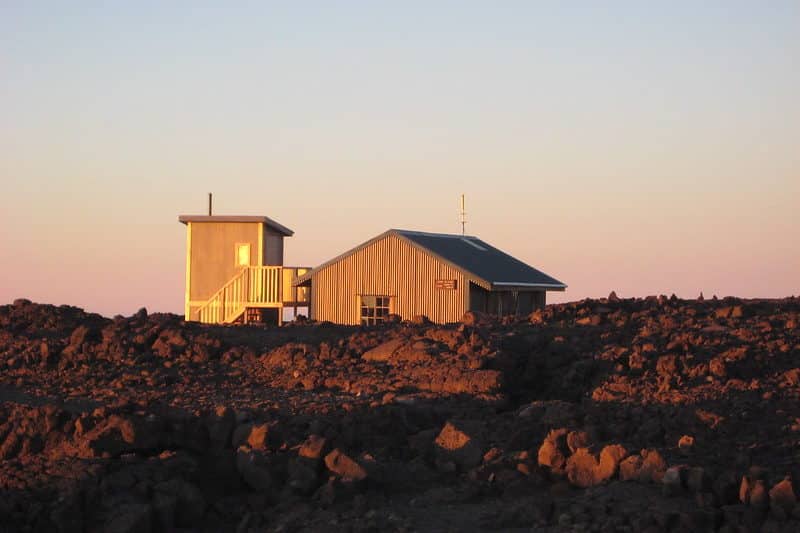
Volcanoes National Park has eight backcountry campsites.
They include K’aha, Halape, Keauhou, ‘Apua Point, Napau, Pepeiao Cabin, Red Hill Cabin, and Mauna Loa Cabin.
A $10 permit will allow you to camp at any of these sites for up to three consecutive days.
You’ll have the most strenuous hike reaching Mauna Loa Cabin (pictured above).
If you want the best scenery, Halape and ‘Apua Point provide excellent views of the southern coast of the Big Island.
Check with the Park Rangers at the visitor center before heading out on your own.
Also, remember to pack all the necessary supplies for overnight stays at the national park! Needless to say, you’re going to want to bring plenty of water!
History and Culture
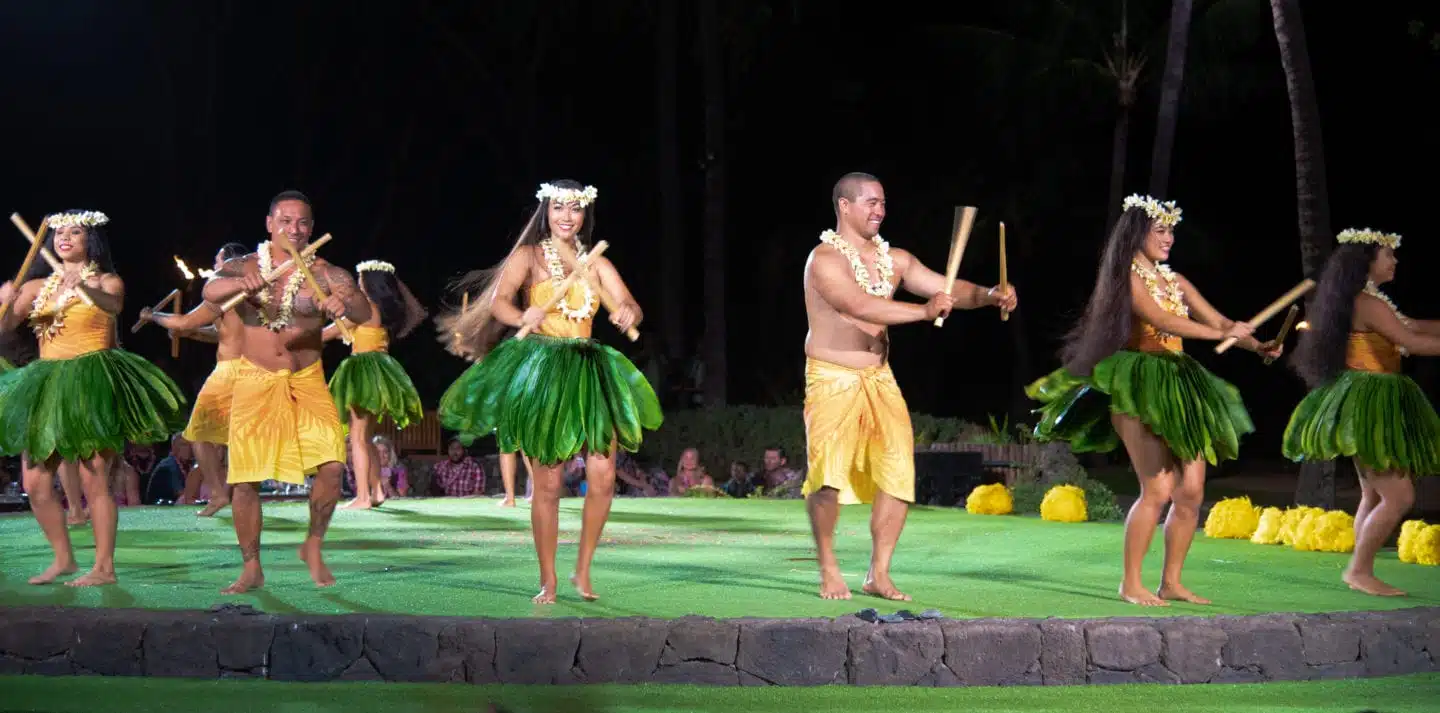
We can’t talk about Hawai’i and Volcanoes National Park without talking about the people and culture of the area.
Polynesian voyagers first settled in Hawaii nearly 1,000 years ago.
They traversed 2,400 miles across the Pacific Ocean from the Marquesas Islands before arriving at the archipelago.
There was a second wave of migration to Hawaii from the Society Islands many years later.
The islands were almost completely isolated from the rest of the world until the arrival of Captain James Cook.
This explorer later died on the Big Island during his third voyage here.
(Long story short, he tried to kidnap and ransom Kalani’opu’u, the then King of Hawai’i, due to a dispute regarding a missing lifeboat. The dispute did not end in Captain Cook’s favor.)
Of course, by that point, a new Hawaiian culture had emerged on this chain of islands in the Pacific.
Hawaiian culture has many distinctions from the Polynesian islands from which the original Hawaiian settlers departed.
One of the key cultural traditions of Hawai’i is mo’olelo, the storytelling of myths and legends that are crucial to the Hawai’ian people.
One such story is related to a site on my list of places to visit in Volcanoes National Park, the story of Pelehonuamea, the volcano goddess who created the landscapes of Hawai’i.
Both creator and destroyer (since the creation of something is the destruction of something else), Pele traveled from Kahiki to the Hawai’ian islands and changed the landscape along her path.
She is embodied by the volcanoes in Hawai’i and has made a permanent dwelling of Halema’uma’u Crater.
Much of Hawai’i is sacred, so keep that in mind when you are visiting the many great natural sights on the Big Island!
In conclusion…
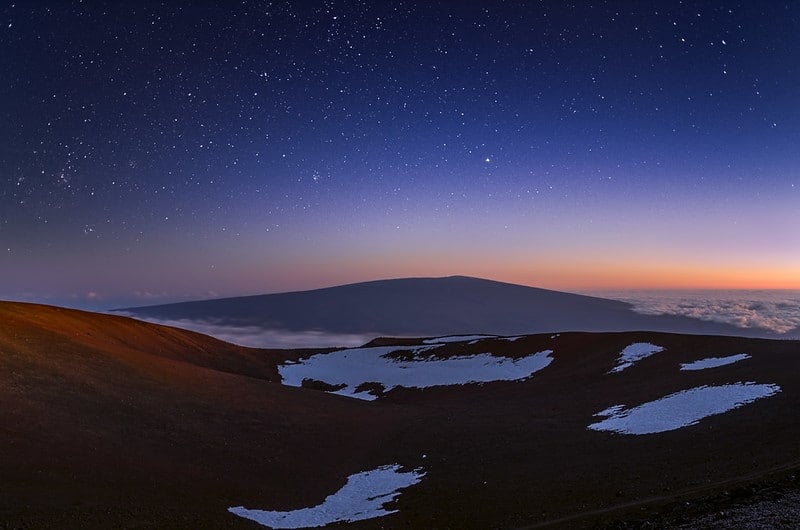
Volcanoes National Park on the Island of Hawai’i is a great place to explore!
The natural landscape contains massive volcanoes, hardened lava flows, rocky cliffsides, lush rainforests, and evidence of the island’s inhabitants carved into rocks in the form of petroglyphs.
Whether you are taking a short trip to the Big Island or taking the time to properly explore it, there will be something here for you to enjoy and appreciate.
Remember to charge your camera batteries because the scenery is stunning and is sure to impress everyone back home!
And if you’re heading to the Big Island, here are some more posts you might find helpful:
- 40 Things to Do on the Big Island
- 50 Most Beautiful Places in Hawaii
- 20 Things You’ll Find at the Four Seasons Hualalai
Safe travels!
Jasmine







